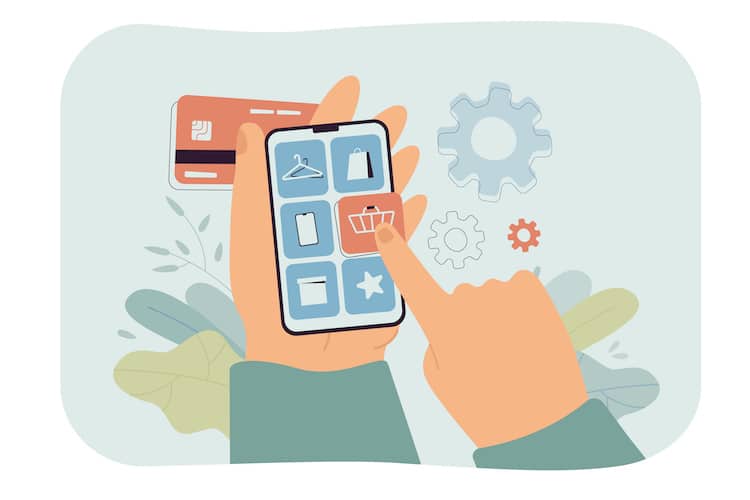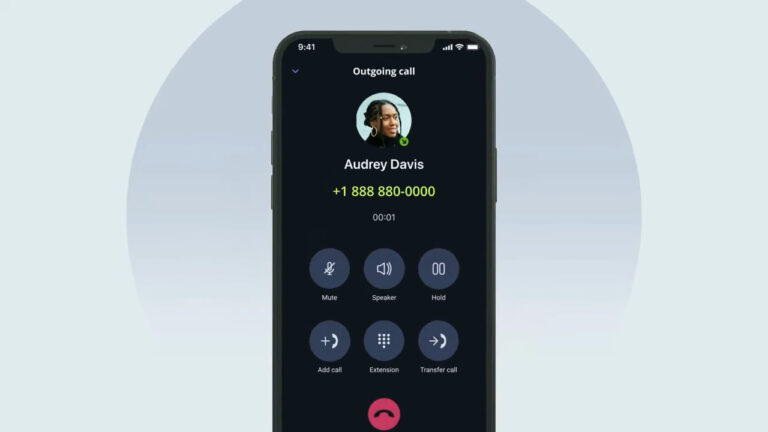Starting a creative agency is a venture that combines passion with strategy. The journey involves not only leveraging your creative skills but also mastering the business side of things. From securing initial funding to building a team and landing clients, every step requires careful planning and execution.
This article will guide you through the essential steps to build and run a successful and profitable creative agency.
Table of Contents
Toggle12 Steps to Start a Creative Agency
| 1. Define Your Niche and Services |
| 2. Develop a Comprehensive Business Plan |
| 3. Establish a Legal Business Structure |
| 4. Build Your Brand Identity |
| 5. Set Up Your Finances |
| 6. Create a Professional Website |
| 7. Implement Marketing Strategies |
| 8. Network and Build Industry Connections |
| 9. Hire and Manage a Talented Team |
| 10. Secure Your First Clients |
| 11. Maintain Strong Client Relationships |
| 12. Improve and Innovate |
1. Define Your Niche and Services

| Identify Your Strengths | Focus on what you do best, whether it’s design, writing, etc. |
| Market Research | Analyze market demands and competition |
| Target Audience | Determine the specific group of clients you want to serve |
| Service Offerings | Define clear, specific services that address client needs |
| Unique Selling Proposition | Develop a unique value proposition that sets you apart |
Identify Your Strengths
Your first step in defining your niche is to assess your skills and strengths. Consider what you enjoy doing the most and where your expertise lies. Are you a talented graphic designer, a skilled copywriter, or a creative director with a knack for strategy? Your core competencies will form the foundation of your agency’s service offerings.
Market Research
Conduct thorough market research to understand the demand for your services. Analyze your competition to identify gaps in the market that you can fill. Look for trends and opportunities within your industry that align with your strengths. This research will help you position your agency effectively and tailor your services to meet market needs.
Target Audience
Determine who your ideal clients are. Consider factors such as industry, company size, and specific needs that your agency can address. Creating detailed client personas can help you understand their pain points and how your services can provide solutions. This targeted approach will make your marketing efforts more effective.
Service Offerings
Define the specific services your agency will offer. Be clear and precise about what you can deliver. Common services for creative agencies include branding, graphic design, content creation, web development, and social media management. Make sure your service offerings align with your strengths and the needs of your target audience.
Unique Selling Proposition
Develop a unique selling proposition (USP) that sets your agency apart from the competition. Your USP should clearly communicate the unique value you bring to clients. It could be a particular expertise, an innovative approach, or exceptional customer service. Your USP will be a key component of your marketing strategy and client pitches.
2. Develop a Business Plan
| Vision and Mission | Define your agency’s purpose and long-term goals |
| Market Analysis | In-depth research on industry trends and target market |
| SWOT Analysis | Identify strengths, weaknesses, opportunities, and threats |
| Service Structure | Detailed description of services offered |
| Pricing Strategy | Determine pricing models and rates |
| Financial Projections | Forecast revenue, expenses, and profit margins |
| Marketing Plan | Outline strategies for promoting your agency |
| Operational Plan | Day-to-day operational procedures |
Vision and Mission
Start by defining your agency’s vision and mission statements. Your vision statement should reflect the long-term goals and aspirations of your agency, while the mission statement should clearly articulate your agency’s purpose and primary objectives. These statements will guide your decision-making and strategic planning.
Market Analysis
Conduct an in-depth market analysis to understand industry trends, your target market, and competitive landscape. This includes researching your potential clients, identifying their needs, and analyzing your competitors’ strengths and weaknesses. Use this information to identify opportunities and threats in the market.
SWOT Analysis
Perform a SWOT analysis to evaluate your agency’s strengths, weaknesses, opportunities, and threats. This strategic planning tool will help you identify internal and external factors that can impact your agency’s success. Use this analysis to leverage your strengths, address your weaknesses, capitalize on opportunities, and mitigate threats.
Service Structure
Detail the specific services your agency will offer. Clearly define each service, its scope, and how it meets the needs of your target market. Consider how these services can be bundled or offered as individual solutions. Ensure that your service structure aligns with your agency’s vision and mission.
Pricing Strategy
Develop a pricing strategy that reflects the value of your services while remaining competitive. Consider different pricing models such as hourly rates, project-based fees, or retainer agreements. Research your competitors’ pricing and adjust your rates accordingly to attract clients while maintaining profitability.
Financial Projections
Create financial projections to forecast your agency’s revenue, expenses, and profit margins over the next three to five years. Include startup costs, operational expenses, and projected income. Use these projections to set financial goals and secure funding if necessary.
Marketing Plan
Outline a marketing plan to promote your agency and attract clients. Define your marketing objectives, target audience, and key messages. Identify the marketing channels you will use, such as social media, content marketing, email campaigns, and networking events. Set measurable goals to track the effectiveness of your marketing efforts.
Operational Plan
Develop an operational plan that details the day-to-day activities required to run your agency smoothly. This includes processes for client acquisition, project management, quality control, and team collaboration. Establish clear procedures for handling administrative tasks, client communications, and service delivery. Ensure that your operational plan supports your business goals and client expectations.
3. Establish a Legal Business Structure

| Business Structure Options | Types include sole proprietorship, partnership, LLC, corporation |
| Legal Requirements | Licenses, permits, and business registration |
| Liability Protection | Importance of protecting personal assets |
| Tax Implications | Understanding tax obligations for different structures |
| Hiring Legal Assistance | Benefits of consulting with a lawyer or legal service |
Business Structure Options
When establishing a legal business structure, it’s crucial to choose the right type for your agency. Common options include:
- Sole Proprietorship: Simplest form, but offers no personal liability protection.
- Partnership: Shared ownership and responsibilities, but personal liability for each partner.
- Limited Liability Company (LLC): Offers liability protection while maintaining flexibility in management.
- Corporation: Provides the highest level of liability protection but involves more regulations and tax requirements.
Evaluate the pros and cons of each structure based on your business needs, growth plans, and risk tolerance.
Legal Requirements
Every business must comply with local, state, and federal regulations. This includes:
- Licenses and Permits: Determine the specific licenses and permits required for operating a creative agency in your location.
- Business Registration: Register your business name and structure with the appropriate government authorities.
- Employer Identification Number (EIN): Obtain an EIN from the IRS for tax purposes and hiring employees.
Adhering to these legal requirements ensures your agency operates legally and avoids potential fines or closures.
Liability Protection
Protecting your personal assets is a key consideration when choosing a business structure. Formal structures like LLCs and corporations shield personal assets from business liabilities, reducing the risk of losing personal property in the event of lawsuits or debts. This protection is particularly important for creative agencies, where client disputes and project risks can arise.
Tax Implications
Different business structures have varied tax obligations. Sole proprietorships and partnerships report business income on personal tax returns, while LLCs and corporations have distinct tax reporting requirements. Understanding these implications helps you plan for tax liabilities and take advantage of any tax benefits. Consulting with a tax professional can provide clarity on the best structure for your financial situation.
Hiring Legal Assistance
Navigating the legal aspects of starting a business can be complex. Hiring a lawyer or utilizing legal services like LegalZoom or Northwest Registered Agent can streamline the process. These professionals can assist with:
- Business Formation: Handling paperwork and registration processes.
- Compliance: Ensuring adherence to all legal requirements.
- Contracts: Drafting contracts to protect your interests and clarify client relationships.
4. Build Your Brand Identity
| Brand Name | Choose a unique and memorable name |
| Logo Design | Create a professional and recognizable logo |
| Color Scheme | Select a consistent and appealing color palette |
| Mission Statement | Define your agency’s purpose and values |
| Brand Voice | Establish a consistent tone and style for communication |
| Visual Elements | Develop cohesive visual elements (fonts, imagery, etc.) |
Brand Name
Choosing the right brand name is critical as it sets the tone for your agency. Your name should be unique, memorable, and reflective of your agency’s vision and services. Conduct thorough research to ensure the name isn’t already in use and consider how it will be perceived by your target audience. Brainstorm with your team or seek inspiration from your personal interests, ensuring it aligns with your brand’s identity.
Logo Design
A professional and recognizable logo is a cornerstone of your brand identity. Your logo should be simple, versatile, and representative of your agency’s mission and values. Hiring a professional designer can ensure that your logo is high-quality and suitable for various mediums, including digital and print.
Color Scheme
Select a color scheme that reflects your brand’s personality and appeals to your target audience. Consistency in color usage across all branding materials helps in building a recognizable and cohesive brand image. Consider the psychological effects of colors and choose a palette that evokes the desired emotions and associations.
Mission Statement
Craft a clear and concise mission statement that defines your agency’s purpose, values, and goals. This statement should communicate what your agency stands for and what it aims to achieve. It serves as a guiding principle for your business operations and helps in connecting with clients who share similar values.
Brand Voice
Establish a consistent brand voice that aligns with your agency’s identity. Whether it’s professional, casual, or playful, your brand voice should be reflected in all forms of communication, including your website, social media, and marketing materials. Consistency in tone and style helps in creating a strong and trustworthy brand image.
Visual Elements
Develop cohesive visual elements such as fonts, imagery, and graphics that complement your brand identity. These elements should be used consistently across all platforms to create a unified and professional appearance. Ensure that your visual elements are versatile and adaptable to various marketing materials and platforms.
5. Set Up Your Finances

| Business Bank Account | Open a dedicated business bank account |
| Accounting System | Choose an accounting software or hire a professional |
| Budgeting and Forecasting | Create a detailed budget and financial forecast |
| Invoicing and Payments | Implement a system for invoicing clients and managing payments |
| Tax Planning | Understand your tax obligations and plan accordingly |
| Financial Tracking | Regularly monitor and review your financial performance |
Business Bank Account
Setting up a dedicated business bank account is essential for separating your personal and business finances. This separation helps in managing cash flow, simplifying accounting, and protecting your personal assets. Choose a bank that offers business-friendly features such as low fees, easy online access, and robust customer support.
Accounting System
Implementing a reliable accounting system is crucial for tracking your income, expenses, and overall financial health. You can opt for accounting software like QuickBooks, Xero, or FreshBooks, which offer features tailored to small businesses. Alternatively, hiring a professional accountant can provide expert financial advice and ensure compliance with accounting standards.
Budgeting and Forecasting
Create a detailed budget that outlines your projected income and expenses. A financial forecast will help you plan for future growth and anticipate potential financial challenges. Regularly updating your budget and forecast allows you to make informed decisions and adjust your strategies as needed.
Invoicing and Payments
Implement a system for invoicing clients promptly and managing payments efficiently. Use invoicing software that integrates with your accounting system to streamline the process. Ensure that your invoices are clear and professional, and include all necessary details to facilitate timely payments. Setting up automated reminders can help reduce late payments.
Tax Planning
Understanding your tax obligations is crucial for avoiding penalties and optimizing your financial performance. Keep track of important tax deadlines and ensure that you set aside funds for tax payments. Consulting with a tax professional can help you take advantage of tax deductions and credits available to your business.
Financial Tracking
Regularly monitor and review your financial performance to ensure your business stays on track. Generate financial reports such as profit and loss statements, balance sheets, and cash flow statements. These reports provide valuable insights into your agency’s financial health and help you identify areas for improvement.
6. Create a Professional Website
| Domain Name | Choose a memorable and relevant domain name |
| Website Design | Focus on user-friendly and responsive design |
| Content Creation | Develop engaging and informative content |
| Search Engine Optimization | Implement SEO best practices |
| Hosting Service | Select a reliable hosting provider |
| Website Analytics | Use tools to track and analyze website performance |
Domain Name
Selecting a domain name is a critical step in establishing your online presence. The domain name should be memorable, easy to spell, and relevant to your agency’s name or services. Ensure that the chosen domain is available and consider purchasing multiple variations to protect your brand.
Website Design
A professional and user-friendly website design is essential for attracting and retaining visitors. Focus on a clean, responsive design that works well on both desktop and mobile devices. Use high-quality images, easy navigation, and clear calls to action to enhance the user experience. Hiring a professional web designer can ensure that your website meets modern design standards.
Content Creation
Develop engaging and informative content that showcases your agency’s expertise and services. This includes an About page, service descriptions, case studies, client testimonials, and a blog. High-quality content not only informs potential clients but also helps in building trust and credibility.
Search Engine Optimization
Implement SEO best practices to improve your website’s visibility in search engine results. This includes optimizing page titles, meta descriptions, and headers with relevant keywords. Ensure that your website loads quickly has a secure HTTPS connection, and includes high-quality backlinks. Regularly update your content to keep it fresh and relevant.
Hosting Service
Choose a reliable hosting provider that offers excellent uptime, speed, and customer support. Consider factors such as bandwidth, storage, and scalability to accommodate your agency’s growth. Popular hosting providers include Bluehost, SiteGround, and HostGator.
Website Analytics
Use tools like Google Analytics to track and analyze your website’s performance. Monitor metrics such as visitor traffic, bounce rates, and conversion rates to gain insights into user behavior. This data helps you make informed decisions to improve your website’s effectiveness and achieve your business goals.
7. Implement Marketing Strategies

| Content Marketing | Create valuable content to attract and engage your audience |
| Social Media Marketing | Leverage social media platforms to promote your agency |
| Email Marketing | Build and maintain an email list for direct communication |
| Paid Advertising | Invest in PPC and social media ads to reach a wider audience |
| Networking | Attend industry events and join professional groups |
| Partnerships | Collaborate with complementary businesses |
Content Marketing
Content marketing is crucial for establishing your agency as an industry leader and attracting potential clients. Create valuable content such as blog posts, case studies, whitepapers, and videos that address your target audience’s pain points and interests. Use your content to showcase your expertise, provide solutions, and build trust with your audience. Regularly update your content to keep it relevant and engaging.
Social Media Marketing
Leverage social media platforms to promote your agency and engage with your audience. Identify the platforms where your target audience is most active, such as LinkedIn, Instagram, or Twitter, and create a consistent posting schedule. Share your content, interact with followers, and use social media advertising to reach a larger audience. Utilize analytics tools to track engagement and refine your strategy.
Email Marketing
Build and maintain an email list to communicate directly with potential and existing clients. Use email marketing to share your latest content, updates, and special offers. Segment your email list to send personalized messages that resonate with different audience groups. Ensure your emails are well-designed, mobile-friendly, and include clear calls to action.
Paid Advertising
Invest in paid advertising to increase your agency’s visibility and attract new clients. Use pay-per-click (PPC) advertising on search engines like Google and social media ads on platforms like Facebook and LinkedIn. Set clear objectives for your ad campaigns, such as generating leads or increasing website traffic, and monitor their performance to optimize your return on investment.
Networking
Networking is essential for building relationships and expanding your client base. Attend industry events, conferences, and workshops to meet potential clients and collaborators. Join professional groups and online communities related to your industry. Networking helps you stay informed about industry trends, gain insights from peers, and identify new business opportunities.
Partnerships
Collaborate with complementary businesses to expand your reach and offer additional value to your clients. Form partnerships with companies that share your target audience but offer different services, such as marketing agencies, web developers, or PR firms. Co-host events, create joint content, and refer clients to each other to mutually benefit from the partnership.
8. Network and Build Connections
| Industry Events | Attend conferences, workshops, and trade shows |
| Online Communities | Join relevant forums and social media groups |
| Professional Associations | Become a member of industry-specific associations |
| Mentorship | Seek out mentors and offer mentorship to others |
| Collaboration | Partner with other professionals and businesses |
| Client Referrals | Leverage your network for client referrals |
Industry Events
Attending industry events is crucial for networking and staying updated with the latest trends. Participate in conferences, workshops, trade shows, and seminars related to your niche. These events provide opportunities to meet potential clients, partners, and industry leaders. Prepare business cards and an elevator pitch to make a strong impression.
Online Communities
Join online communities, forums, and social media groups where professionals in your industry gather. Platforms like LinkedIn, Facebook, and specialized forums offer spaces to share insights, ask questions, and build relationships. Engage actively by contributing valuable content, participating in discussions, and connecting with other members.
Professional Associations
Becoming a member of professional associations can enhance your credibility and provide valuable networking opportunities. These associations often host events, webinars, and training sessions. They also offer resources and directories that can help you connect with other professionals and potential clients.
Mentorship
Seeking out mentors can provide guidance and insights that are invaluable for your agency’s growth. Experienced mentors can help you navigate challenges and make informed decisions. Additionally, offering mentorship to less experienced professionals can build your reputation and expand your network.
Collaboration
Partnering with other professionals and businesses can open up new opportunities. Collaborate on projects, co-host events, or create joint content. These partnerships can help you reach a broader audience, share resources, and enhance your service offerings.
Client Referrals
Leverage your existing network to gain client referrals. Satisfied clients, colleagues, and industry connections can refer new business to your agency. Develop a referral program that incentivizes referrals and makes it easy for your network to recommend your services.
9. Hire and Manage a Talented Team

| Identifying Needs | Determine the roles and skills required |
| Recruitment | Use job boards, networking, and referrals to find candidates |
| Interview Process | Conduct thorough interviews and practical assessments |
| Onboarding | Develop a comprehensive onboarding process |
| Team Culture | Foster a positive and collaborative work environment |
| Performance Management | Implement regular performance reviews and feedback |
| Professional Development | Offer opportunities for training and growth |
Identifying Needs
The first step in building a talented team is identifying the roles and skills your agency requires. Assess your current workload and future projects to determine the specific expertise needed. Common roles in a creative agency include graphic designers, copywriters, project managers, and account executives. Creating detailed job descriptions will help clarify the responsibilities and qualifications for each position.
Recruitment
Recruitment involves finding and attracting the right candidates for your agency. Utilize job boards like LinkedIn, Indeed, and Glassdoor to post job openings. Leverage your professional network and seek referrals from colleagues and industry connections. Attending industry events and participating in online communities can also help you identify potential hires.
Interview Process
Conduct thorough interviews to evaluate candidates’ skills, experience, and cultural fit. Include practical assessments, such as design tasks or writing samples, to gauge their abilities in real-world scenarios. Consider multiple rounds of interviews with different team members to get a well-rounded view of each candidate.
Onboarding
Develop a comprehensive onboarding process to integrate new hires into your agency smoothly. Provide them with the necessary tools, resources, and information to perform their roles effectively. Introduce them to your team, company culture, and workflows. A well-structured onboarding process helps new employees feel welcome and prepared to contribute from day one.
Team Culture
Foster a positive and collaborative work environment that encourages creativity and innovation. Promote open communication, mutual respect, and teamwork. Organize regular team-building activities and social events to strengthen relationships and boost morale. A strong team culture enhances productivity and employee satisfaction.
Performance Management
Implement a system for regular performance reviews and feedback. Set clear goals and expectations for each team member and provide constructive feedback to help them improve. Recognize and reward outstanding performance to motivate your team. Address any performance issues promptly and fairly to maintain a high standard of work.
Professional Development
Offer opportunities for training and professional development to help your team grow their skills and advance their careers. Provide access to industry conferences, workshops, and online courses. Encourage continuous learning and support employees in pursuing certifications or advanced degrees. Investing in your team’s development benefits both the individuals and your agency as a whole.
10. Secure Your First Clients
| Portfolio | Build a strong portfolio showcasing your best work |
| Networking | Leverage professional networks and attend industry events |
| Referrals | Ask for referrals from satisfied clients and connections |
| Cold Outreach | Send personalized pitches to potential clients |
| Online Presence | Optimize your website and social media for client attraction |
| Proposal Writing | Craft compelling proposals tailored to client needs |
Portfolio
A strong portfolio is crucial for attracting your first clients. Showcase your best work, highlighting a variety of projects that demonstrate your skills and versatility. Include case studies that detail the challenges faced, the solutions you provided, and the results achieved. Make your portfolio accessible online, and ensure it’s easy to navigate and visually appealing.
Networking
Networking is a powerful tool for securing clients. Attend industry events, trade shows, and local business meetups to connect with potential clients and collaborators. Engage in online communities and forums related to your niche. Building relationships with industry professionals can lead to referrals and new business opportunities.
Referrals
Leverage your existing network to gain referrals. Reach out to satisfied clients, colleagues, and professional contacts to ask for introductions to potential clients. Offer incentives for referrals, such as discounts on future services or referral bonuses. Personal recommendations can significantly increase your chances of securing new clients.
Cold Outreach
Cold outreach involves proactively contacting potential clients with personalized pitches. Research companies that could benefit from your services and tailor your message to address their specific needs. Highlight your unique selling points and include examples of relevant work from your portfolio. Follow up on your initial outreach to demonstrate your persistence and enthusiasm.
Online Presence
Optimize your online presence to attract potential clients. Ensure your website is professional, user-friendly, and showcases your portfolio effectively. Use search engine optimization (SEO) techniques to increase your visibility in search results. Maintain active and engaging social media profiles on platforms relevant to your target audience. Share valuable content and interact with followers to build your reputation.
Proposal Writing
Craft compelling proposals that address the unique needs of each potential client. Highlight your understanding of their challenges and outline how your services can provide solutions. Include a clear project timeline, deliverables, and pricing. Use a professional and persuasive tone, and customize each proposal to demonstrate your commitment to the client’s success.
11. Maintain Strong Client Relationships

| Clear Communication | Establish and maintain open, transparent communication |
| Client Feedback | Regularly seek and act on client feedback |
| Delivering Value | Consistently meet or exceed client expectations |
| Personal Touch | Personalize interactions to build stronger connections |
| Problem Resolution | Address issues promptly and effectively |
| Regular Updates | Keep clients informed about project progress |
Clear Communication
Establishing clear and transparent communication with your clients is essential for maintaining strong relationships. Set expectations from the beginning regarding how and when you will communicate. Use a combination of emails, phone calls, and meetings to keep in touch. Be proactive in sharing updates and addressing any concerns your clients may have.
Client Feedback
Regularly seek feedback from your clients to understand their satisfaction and areas for improvement. Use surveys, feedback forms, and one-on-one meetings to gather insights. Act on the feedback received to show clients that you value their input and are committed to continuous improvement. This helps in building trust and long-term partnerships.
Delivering Value
Consistently meeting or exceeding client expectations is key to maintaining strong relationships. Ensure that your work is of high quality and delivers tangible results. Be reliable and meet deadlines to build your reputation as a dependable agency. Going the extra mile to add value can turn satisfied clients into loyal advocates.
Personal Touch
Personalizing your interactions with clients can strengthen your relationships. Take the time to understand their preferences, business goals, and challenges. Tailor your communication and services to meet their specific needs. Small gestures, such as remembering birthdays or sending thank-you notes, can make clients feel valued and appreciated.
Problem Resolution
Address any issues or concerns promptly and effectively. Acknowledge mistakes and take responsibility, then work quickly to resolve the problem. Keeping clients informed throughout the resolution process can mitigate frustration and demonstrate your commitment to their satisfaction.
Regular Updates
Keep clients informed about the progress of their projects with regular updates. Use project management tools to share timelines, milestones, and deliverables. Regular updates help manage expectations and prevent misunderstandings. They also provide opportunities for clients to give input and make adjustments as needed.
12. Improve and Innovate
| Continuous Learning | Stay updated with industry trends and technologies |
| Client Feedback | Use feedback to drive improvements and innovations |
| Process Optimization | Regularly review and enhance internal processes |
| Experimentation | Encourage creativity and experimentation |
| Technology Adoption | Leverage new tools and technologies to enhance services |
| Industry Collaboration | Collaborate with industry peers to share knowledge and innovate |
Continuous Learning
Staying updated with the latest industry trends, tools, and technologies is essential for continuous improvement and innovation. Attend industry conferences, workshops, and webinars. Subscribe to industry publications and follow thought leaders to stay informed. Encourage your team to pursue ongoing education and training to keep their skills sharp and relevant.
Client Feedback
Utilize client feedback to identify areas for improvement and innovation. Regularly solicit feedback through surveys, interviews, and review sessions. Analyze this feedback to uncover patterns and insights that can drive enhancements in your services, processes, and client interactions. Implement changes based on feedback to show clients that their opinions are valued and acted upon.
Process Optimization
Regularly review and optimize your internal processes to increase efficiency and effectiveness. Identify bottlenecks, redundancies, and areas for improvement. Implement process management tools and methodologies, such as Lean or Agile, to streamline operations. Continuous process improvement helps in delivering better services and maintaining a competitive edge.
Experimentation
Encourage a culture of creativity and experimentation within your agency. Allow your team the freedom to explore new ideas, techniques, and approaches. Create an environment where failure is seen as a learning opportunity rather than a setback. Experimentation can lead to innovative solutions and improvements that set your agency apart from the competition.
Technology Adoption
Stay ahead of the curve by adopting new tools and technologies that can enhance your services and operations. Invest in software and platforms that improve project management, communication, design, and marketing. Use data analytics tools to gain insights into your performance and make informed decisions. Embracing technology helps in staying relevant and delivering high-quality services efficiently.
Industry Collaboration
Collaborate with industry peers and organizations to share knowledge and drive innovation. Join professional associations, participate in industry forums, and engage in collaborative projects. Networking with other professionals can provide new perspectives, ideas, and opportunities for innovation. Collaboration helps in staying connected with the broader industry and continuously evolving.
FAQs
Last Words
Starting and running a successful creative agency requires a combination of strategic planning, effective management, and continuous innovation. By defining your niche, developing a comprehensive business plan, establishing a strong brand identity, and implementing effective marketing strategies, you can build a solid foundation for your agency.
Focus on building strong client relationships, staying updated with industry trends, and continuously improving your processes to ensure long-term success. With dedication and the right approach, your creative agency can thrive in a competitive market and achieve sustainable growth.




